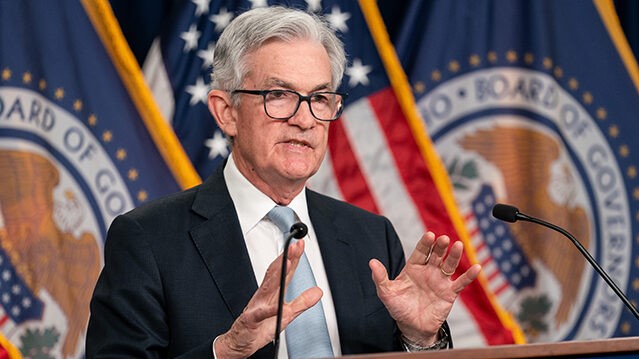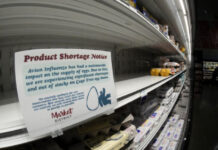Consumer prices continued to climb in October as the pace of overall inflation held at the level hit a month earlier and underlying inflation excluding food and fuel slowed.
The Labor Department’s consumer price index rose by 0.4 percent compared with a month earlier. Compared with 12 months ago, the CPI is up 7.7 percent.
Core consumer prices, a key measure of inflation that excludes food and energy, rose 0.3 percent compared with September and are up 6.3 percent from a year earlier.
Economists had expected a 0.7 percent month-to-month rise in CPI. Prices were expected to be up 7.9 percent compared with a year ago. Core prices were seen as rising 0.5 percent for the month and 6.6 percent for the year.
Stock futures rallied after the October inflation figures were released. Prior to the release, the futures were indicating the Dow Jones Industrial Average was expected to rise by around 50 points. After the release, the futures implied the Dow would climb nearly 800 points.
Inflation cooled dramatically in July, with the CPI unchanged compared with June its smallest increase since 2020. This prompted many to declare that inflation had peaked and inspired hopes that the rapid price increases that have beset the economy since last year might be in the rearview mirror. Inflation accelerated in August and September, however, dashing those hopes. In September, the CPI was up 0.4 percent for the month and 8.2 percent compared with a year earlier.
Core prices were up 0.6 percent in September from August and 6.6 percent year over year. So the pace of core inflation decelerated in October.
The pace of food inflation also slowed down. The index of food for consumption at home rose 0.4 percent in October and is up 12.4 percent from a year ago. The index tracking the price of eating out rose 0.9 percent for the third consecutive month. Compared with a year ago, food away from home prices are up 8.6 percent.
The index for shelter rose 0.8 percent compared with the prior month and contributed over half of the monthly increase in the broad index. The energy index increased 1.8 percent over the month as the gasoline index and the electricity index rose, but the natural gas index decreased.
Used car prices fell 2.4 percent, the fourth month of declining prices. Compared with a year ago, used car prices are up two percent. New car prices rose 0.4 percent and are up 8.4 percent from a year ago.
Clothing prices fell 0.7 percent after falling 0.3 percent in September. Compared with a year ago, apparel prices are up 4.1 percent.
Prices in the services sector excluding energy rose 0.5 percent and are up 6.7 percent from a year ago.
The Federal Reserve officials has been raising interest rates since March, including four straight hikes of an unusually large 75 basis points. This has taken the Fed’s benchmark rate from near zero to just below four percent.
Prior to the CPI release, the Fed Fund futures market indicated that investors were almost evenly divided about whether the Fed will announce a smaller hike of 50 basis points at the December meeting or keep up the pace with another 75 basis point hike, with each having close to a 50 percent chance of occurring. After the CPI release, the odds shifted to significantly favor the smaller hike. At nine a.m., the Fed Funds futures market implied an 80 chance of a 50 basis point hike.
The Fed targets the overnight rate banks pay to each other to borrow reserves and also pays banks interest on reserves they hold. Because longer-term yields reflect the expected path of short-term rates, the Fed’s tightening has pushed those up, raising the costs of borrowing for the government, home buyers and consumers, and businesses. The yield on 10-year Treasuries has jumped from around 1.5 percent at the close of last year to around 4.1 percent now. The average 30-year fixed rate on home loans has more than doubled, rising from 3.2 percent to 7.5 percent. The yield on riskier corporate “junk” bonds has marched upward from 4.35 percent at the end of last year to 9.15 percent today, according to an index maintained by Bank of America.
Yields move in the opposite direction of bond prices, meaning bondholders have faced large losses from these rapid changes. Stocks are down sharply as well, in part because investors discount future cash flows more when interest rates are higher. As well, investors fear that the Fed’s tightening campaign will push the U.S. economy into a recession that will hurt corporate earnings. With bond and stock prices both falling together, traditionally diversified investor portfolios have suffered unusually large losses this year.




